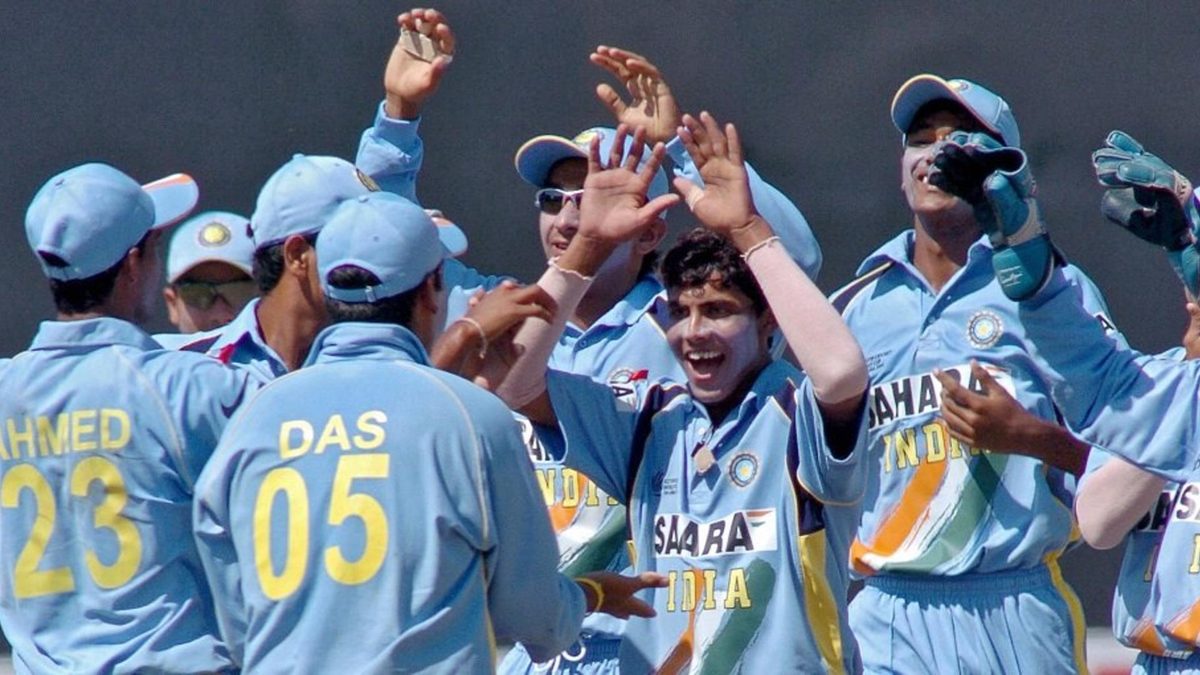
India finished runners-up at the 2006 Under-19 World Cup, remaining unbeaten throughout before losing dramatically to Pakistan in the final. Several of their cricketers became future stars. Here is how they fared.
The side put up a terrific performance in the competition, winning their three league matches by nine wickets, eight wickets, and eight wickets, the quarter-final by 126 runs, and the semi-final by 234 runs. They even bowled out Pakistan for 109 in the final, but never recovered after being reduced to 9-6, and were eventually bowled out for 71 runs.
Ravikant Shukla
Captain, middle-order bat
Despite his team’s excellent run in the tournament, Shukla – a first-class cricketer before the tournament – had a torrid run, managing a mere 53 runs in five innings. Shukla continued to play for Uttar Pradesh, then for Goa until 2013/14. He never scored a hundred in limited-overs cricket.
Pinal Shah
Wicketkeeper, lower-order bat
Shah had 14 dismissals in the tournament, and remained a stalwart for Baroda for well over a decade. The highlight of his career came in 2010/11, when he led Baroda to the Ranji Trophy final after they were on the verge of being relegated. He also played for Mumbai Indians and Rajasthan Royals.
Rohit Sharma
Middle-order bat
Rohit scored 205 runs at 78 in the World Cup, and was part of India’s 2007 T20 World Cup winning side. A promotion to the opening slot helped him evolve into one of the greatest ODI batters of all time. Over time, he flirted with the leading run-scorer’s spot in T20I cricket, became India’s first-choice opener in Test cricket, led Mumbai Indians to five IPL titles, and led India in all three formats.
Ravindra Jadeja
Left-arm spin, middle-order bat
Two years after this Under-19 World Cup, Jadeja became part of the triumphant 2008 batch. Over years, he established himself as one of India’s greatest all-rounders of all time, forming a devastating spin partnership with R Ashwin and rising through the batting order over time. Over the years, he produced some remarkable limited-overs performances, and is a much sought-after IPL player.
Cheteshwar Pujara
Middle-order bat
Pujara’s 349 runs (at 116.33) earned him the Player of the Tournament award in the World Cup. He debuted for India four years later, was a force in Test cricket throughout the decade that followed, and played key roles in India’s first two series wins on Australian soil, in 2018/19 and 2020/21. He holds the record for most double hundreds by an Indian in first-class cricket.
Piyush Chawla
Leg-spin, lower-order bat
Chawla was fast-tracked into the Test side a month after he had an excellent World Cup (13 wickets at 12.15 apiece), but he could never establish himself in either format. Nevertheless, he was part of India’s squads that won the T20 World Cup in 2007 and the World Cup in 2011. As of 2022, only four men have taken more wickets in the IPL. He is now a commentator.
Shahbaz Nadeem
Left-arm spin
Nadeem had made his Ranji Trophy debut at a mere 15, in 2004/05. After playing only once in the 2006 World Cup, he went on to become a stalwart for Jharkhand as well as for Delhi Daredevils and Sunrisers Hyderabad. His 8-10 against Rajasthan in 2018/19 remain the best figures in List A cricket. A belated yet deserving Test call-up came in 2019/20.
Gaurav Dhiman
Opening bat, medium-fast ball
Dhiman stood out in the World Cup for his strike rate of 123 for 222 runs (along with four wickets with fast-medium bowling). He was marked as a future limited-overs star, but injuries restricted his career to one year and eight matches in domestic cricket. Mumbai Indians and Royal Challengers Bangalore both got him at the auctions, but he never played an IPL match.
Mayank Tehlan
Middle-order bat
A middle-order batter, Tehlan scored 97 runs in the tournament, and scored a Ranji Trophy double hundred later that year, against Baroda. He continued in domestic cricket, especially in the Ranji Trophy, until 2010/11.
Debabrata Das
Middle-order bat
Twenty20 cricket came at the right time for Das, who was part of the Kolkata Knight Riders system until 2013. His ability to score at a brisk pace earned him a contract with Brothers Union in the Dhaka Premier League.
Abu Nechim Ahmed
Medium-fast ball, lower-order bat
Abu Nechim’s ability to swing the ball both ways earned 10 wickets at 16.40. He signed up for the ICL, which cost him a couple of crucial years, but he returned to play for multiple IPL sides as well as spearhead the Assam attack. He now plays for Nagaland.
V Yo Mahesh
Medium-fast ball, lower-order bat
Yo Mahesh could generate both pace and awkward bounce, which yielded him 11 wickets in the World Cup at 14.18. He could also bat, and was a brilliant fielder, but a lack of consistency prevented him from doing justice to his potential. He played first-class cricket for Tamil Nadu until 2017, and was seen featuring in the Abu Dhabi T10 League last year.
Mohnish Parmar
Off-break
Batters found it difficult to score off Parmar, who finished the World Cup with near-ridiculous figures of 22-1-50-5. He took giant strides in domestic cricket for Gujarat (92 wickets in 20 matches at 18.42 are outstanding numbers), but he repeatedly got no-balled for his bowling action in domestic cricket. He never played after 2011/12.
Saurabh Bandekar
Medium-fast ball, lower-order bat
After a reasonable World Cup (four wickets at 23), Bandekar continued to render yeoman services to Goa for over a decade, and was good enough to make it to the Duleep Trophy side. He also had two List A hundreds, but his bowling lost edge over the years.








